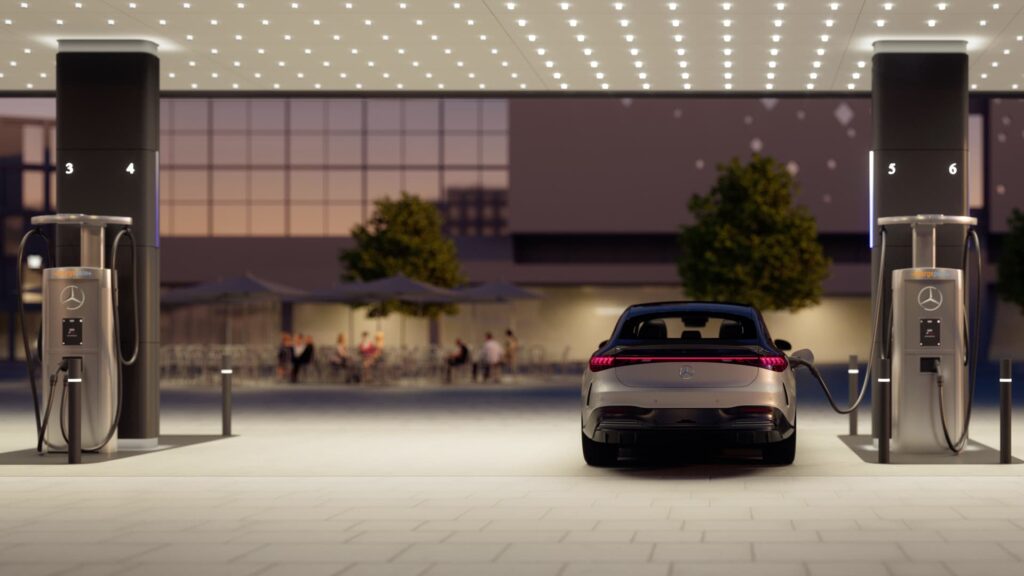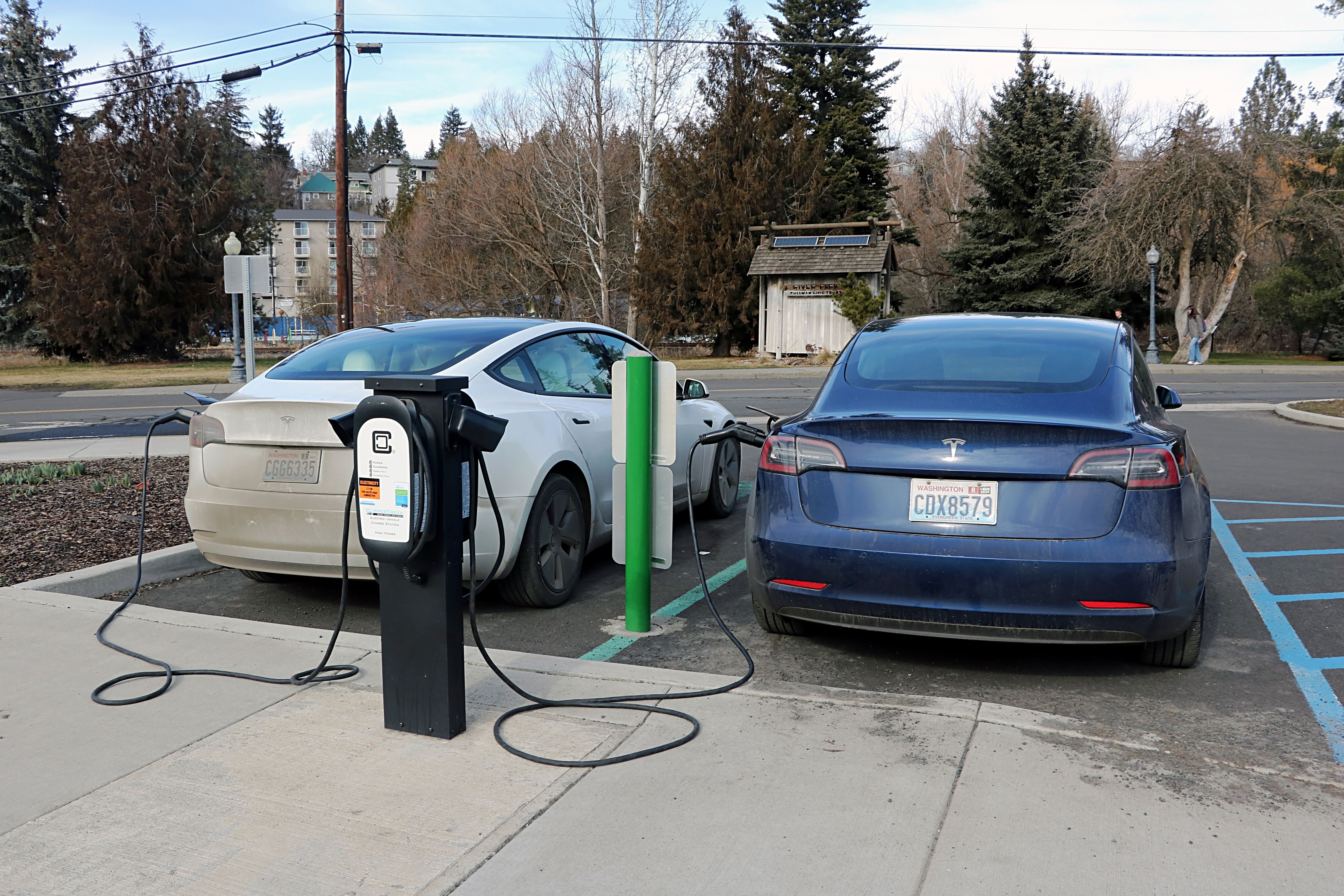How to Make Smarter Decisions in EV Investments by Buying EV Charging news
How to Make Smarter Decisions in EV Investments by Buying EV Charging news
Blog Article
Top EV Charging News: Key Updates on Facilities and Advancement

Current Improvements in Fast-Charging Technology

Moreover, advancements in battery innovation, consisting of improved thermal administration systems and greater energy thickness batteries, complement fast-charging abilities. These advancements reduce the threat of battery degradation during quick charging, making certain durability and performance for EV owners.
In addition, the assimilation of wise billing options is improving user experience, allowing real-time monitoring and vibrant rates designs. EV Charging news. This flexibility allows drivers to enhance charging times and expenses based on grid need
As automakers remain to invest in fast-charging networks, the collaboration between sector stakeholders is vital. Collaborations in between charging station companies and automobile suppliers are leading the way for considerable protection, ultimately fostering a much more durable EV ecological community. These innovations are crucial in sustaining the transition to sustainable transport.
Federal Government Campaigns for Billing Development
Federal government campaigns play a critical function in the development of electric automobile (EV) charging facilities, facilitating the change to lasting transport. Various federal and state programs are being applied to enhance charging ease of access, decrease the economic problem on customers, and advertise the adoption of electric cars.
Especially, the united state government has assigned significant funding through the Framework Investment and Jobs Act, which earmarks $7.5 billion for EV charging network advancement throughout the nation. This funding is aimed at releasing countless new charging stations, particularly in underserved locations, thus attending to variety anxiety among potential EV customers.
In addition, various states are passing regulations to simplify the permitting process for billing station setups, which is essential for speeding up implementation. Motivations such as tax obligation debts and refunds for both customers and companies are also being introduced to motivate the installment of charging infrastructure.
Furthermore, public-private partnerships are increasingly ending up being an emphasis, leveraging private financial investment to enhance federal government funding. These initiatives emphasize a collaborative strategy crucial for developing a effective and thorough EV billing network, eventually adding to a greener and even more lasting future.
Cutting-edge Battery Solutions Enhancing Efficiency
Transforming the landscape of electrical lorry (EV) innovation, innovative battery solutions are substantially boosting effectiveness and efficiency. Developments in battery chemistry, especially with lithium-sulfur and solid-state batteries, are resulting in boosted energy thickness, which enables longer arrays and faster billing times. These brand-new battery types have the possible to outperform typical lithium-ion batteries by providing higher abilities while decreasing weight, thereby boosting total vehicle effectiveness.
In addition, advancements in battery administration systems (BMS) are optimizing power use and extending battery lifespan. Intelligent formulas keep an eye on battery health and that site wellness and efficiency, allowing real-time adjustments to charging and releasing processes. This not just boosts the performance of the battery but also guarantees an extra lasting and dependable energy source for EVs.
In addition, the assimilation of recycling technologies is dealing with the environmental influence of battery manufacturing and disposal. Technologies in second-life applications for EV batteries are promoting their usage in energy storage space systems, adding to a round economy.
As these ingenious battery options remain to advance, they assure to transform the EV market, making electric cars a lot more enticing and accessible to a wider target market while supporting worldwide sustainability objectives.

Partnership Between Automakers and Billing Networks
Identifying the vital need for a durable billing infrastructure, car manufacturers are progressively working together with charging network service providers to improve the EV ownership experience (EV Charging news). These collaborations intend to develop a seamless charging community that benefits consumers and sustains the change to electric cars
Major automobile brand names are joining forces with well-known billing networks to increase their billing station protection, guaranteeing drivers have accessibility to dependable and practical charging choices. As an example, partnerships with networks like ChargePoint and Electrify America allow car manufacturers to incorporate charging services straight into their cars' navigating systems, guiding individuals to the local stations and giving real-time accessibility updates.
Furthermore, these partnerships usually cause the development of fast-charging modern technologies that dramatically reduce the moment required to reenergize an EV. By merging sources and proficiency, automakers and billing networks can innovate faster, creating options that satisfy the growing demand for electric flexibility.
Furthermore, joint initiatives might likewise cause even more standardized billing procedures, which can alleviate consumer confusion and advertise more comprehensive EV adoption. Generally, these calculated partnerships are critical in constructing a user-friendly and reliable charging infrastructure that satisfies the demands of an increasing electrical automobile market.
Challenges Facing EV Charging Infrastructure
As the electric car market proceeds to grow, several challenges are appearing that impede the advancement of a thorough charging framework. One of the view it key challenges is the inadequate variety of charging terminals, specifically in country and underserved urban locations. This void develops range anxiousness among prospective EV buyers, discouraging them from making the button.
In addition, the lack of standardization accountable innovation complicates the facilities landscape. Variations in plug types and billing rates can develop complication for users and increase functional complexities for billing network drivers. In addition, the assimilation of billing stations into existing electrical grids positions substantial obstacles. Several regions deal with capacity limitations, needing significant investments in grid upgrades to fit increased demand.
Another pressing concern is the high expense connected with the installation and upkeep of charging terminals, which can be a barrier for both public entities and personal services. Governing obstacles and zoning limitations can delay the deployment of charging facilities, impeding progression in expanding necessary services. Resolving these challenges will certainly be vital for fostering a robust EV ecological community that sustains the transition to sustainable transportation.
Conclusion
To conclude, the recurring developments in EV charging technology, supported by substantial government efforts and innovative battery solutions, are crucial for the development and efficiency of electrical lorry infrastructure. Collaborations between automakers and charging providers even more boost terminal insurance coverage, dealing with the growing need for easily accessible billing alternatives. Despite difficulties that persist within the EV billing landscape, these developments symbolize a favorable trajectory towards a more lasting and reliable electric automobile ecological community.
Innovations in charging facilities have led to you can find out more the growth of ultra-fast battery chargers capable of providing up to 350 kW of power, dramatically decreasing charging times. Variants in plug kinds and billing rates can produce confusion for users and raise operational intricacies for charging network operators.In final thought, the ongoing innovations in EV charging technology, sustained by substantial federal government campaigns and innovative battery services, are critical for the growth and efficiency of electrical automobile facilities. Partnerships in between automakers and charging carriers better enhance terminal coverage, dealing with the expanding demand for available billing alternatives. Despite obstacles that continue within the EV billing landscape, these advancements indicate a favorable trajectory in the direction of a more effective and lasting electric car community.
Report this page